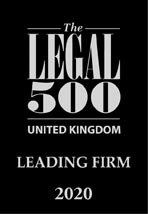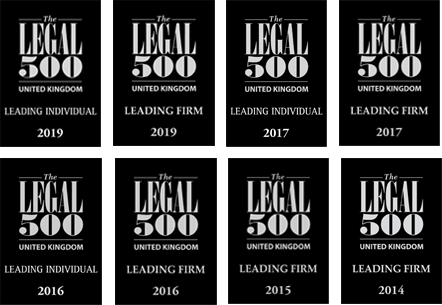Key Information
1.
A Freezing Order is an extremely effective legal tool for a Claimant who is trying to recover assets that belong to them which have been taken by a third party, or who has a claim against a third party and there is a risk that assets will be put beyond the reach of the Claimant to thwart enforcement.
2.
A Freezing Order is obtained under Part 25 of the Civil Procedure Rules and is described in those rules as an Order “restraining a party from removing assets located in the jurisdiction out of the country or from dealing with assets whether they are within the jurisdiction or not”.
3.
A Freezing Order requires an underlying cause of action or legal claim which can be pursued against the Defendant. This could be a claim in fraud, conspiracy or any one of a number of legal “wrongs”.
4.
The element of surprise. A Freezing Order is normally made without giving the Defendant any notice and anybody applying for a Freezing Order has a duty to make full and frank disclosure of all facts to the Court whether those facts support or undermine their case.
5.
Entitlement. In order to establish entitlement to a Freezing Order, the Claimant has to show that they have a “good arguable case”. The Court has to be satisfied that there is enough evidence to justify the making of a Freezing Order. Furthermore, the Claimant also has to establish that there is a risk of dissipation of assets. This can be difficult to evidence but Simon Burn Solicitors has expertise in advising as to the risk of dissipation and the circumstances in which the dissipation can readily be referred. For example, if there is an allegation of criminal behaviour or fraud, the Court is more likely to infer there is a risk of dissipation. The Court will always scrutinise dishonest conduct closely.
6.
Penal Notice. A Freezing Injunction will usually contain a Penal Notice. This is a warning to the Defendant that if they breach the Order then they will be guilty of contempt of Court and liable to punishment by imprisonment, a fine or seek detention of their assets. A Penal Notice states “If you [the named Defendant] do not comply with this Order you may be held in contempt of Court and imprisoned or fined, or your assets may be seized”. The presence of a Penal Notice on a Freezing Order makes it an extremely powerful tool. Simon Burn Solicitors has experience of taking action seeking the imprisonment of individuals who have breached Freezing Orders and defending those against who such an allegation has been made.
7.
Obtaining the Freezing Order. In order to obtain a Freezing Order a detailed Affidavit has to be prepared setting out the circumstances of the case, and explaining to the Court why the Freezing Order should be granted. Drafting the Affidavit is a skilled task which requires the knowledge that Simon Burn Solicitors has in its fraud team. The Affidavit must explain why a Freezing Order is required, provide evidence of the assets which the Claimant seeks to freeze, explain why there is a risk of dissipation of assets and set out in summary form why there is a good arguable case. The Affidavit must also deal with any potential defences that the Defendant may have, any prejudice or hardship that may be suffered if a Freezing Order is not granted and also give what is known as a “Cross Undertaking” as to damages. The Cross Undertaking as to damages will ensure that if it is subsequently found that the Court should not have made the Freezing Order the Claimant has given an Undertaking to compensate the Defendant.
8.
The terms of the Freezing Order. The Civil Procedure Rules set out in the annex to Practice Direction 25A a standard form of Freezing Order. The draft Order must be clear so that the person against whom the Order has been made knows exactly what they are required to do. The Freezing Order will have a Penal Notice endorsed on the front page and will also place some additional burdens on the Defendant.
For example, the Defendant may be ordered to provide within 7 days of service of the Freezing Order an Affidavit setting out his or her or its assets. The Freezing Order will also contain some “exceptions”. These will enable the Defendant to make payments in the ordinary course of business, will only ensure that assets are frozen to protect the value of the Claimant’s claim and will not stop
the Defendant from spending money on ordinary living expenses or obtaining legal advice.
9.
Service. Once the Freezing Order has been obtained, it will be served on the Defendant. Service is normally effected personally by use of a process server. The Freezing Order should also be served on anybody who has control over any of the assets that are subject to the Freezing Order such as the Defendant’s bank.
10.
Next steps. Once a Freezing Order has been made, the Court will convene another Hearing to decide whether or not the Freezing Order should continue. The Defendant will have the opportunity to participate in that Hearing. Often Freezing Order applications are compromised by the Defendant offering an undertaking i.e. a promise to the Court not to dissipate assets. Freezing Orders require continual monitoring. The Court has the discretion to refuse a Freezing Order and even if a Freezing Order is granted there is no guarantee that the Claimant will be paid.
A Freezing Order, however, is an extremely powerful weapon in the hands of a Claimant and can be used to prevent a Defendant putting their assets beyond the reach of creditors.

